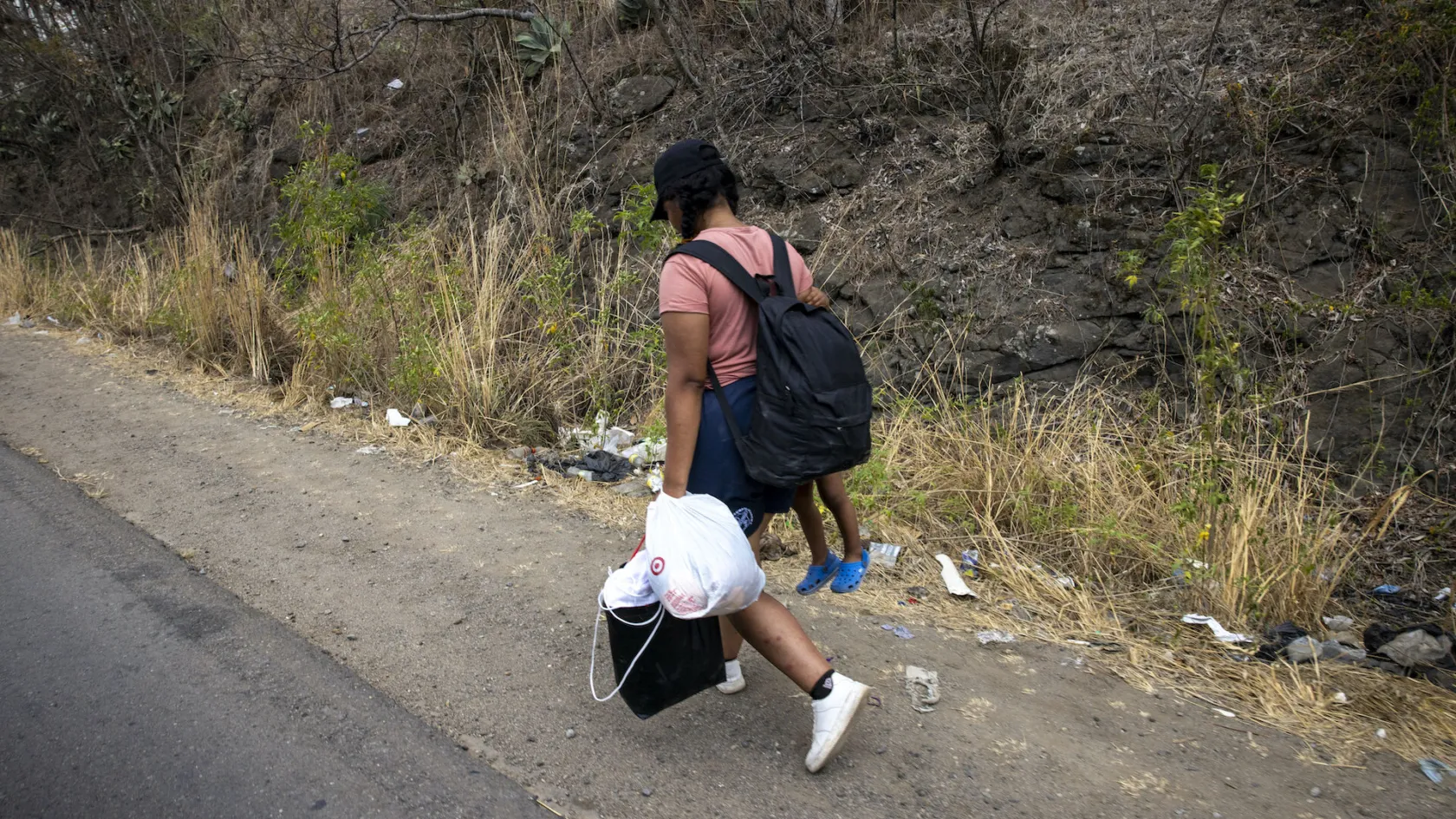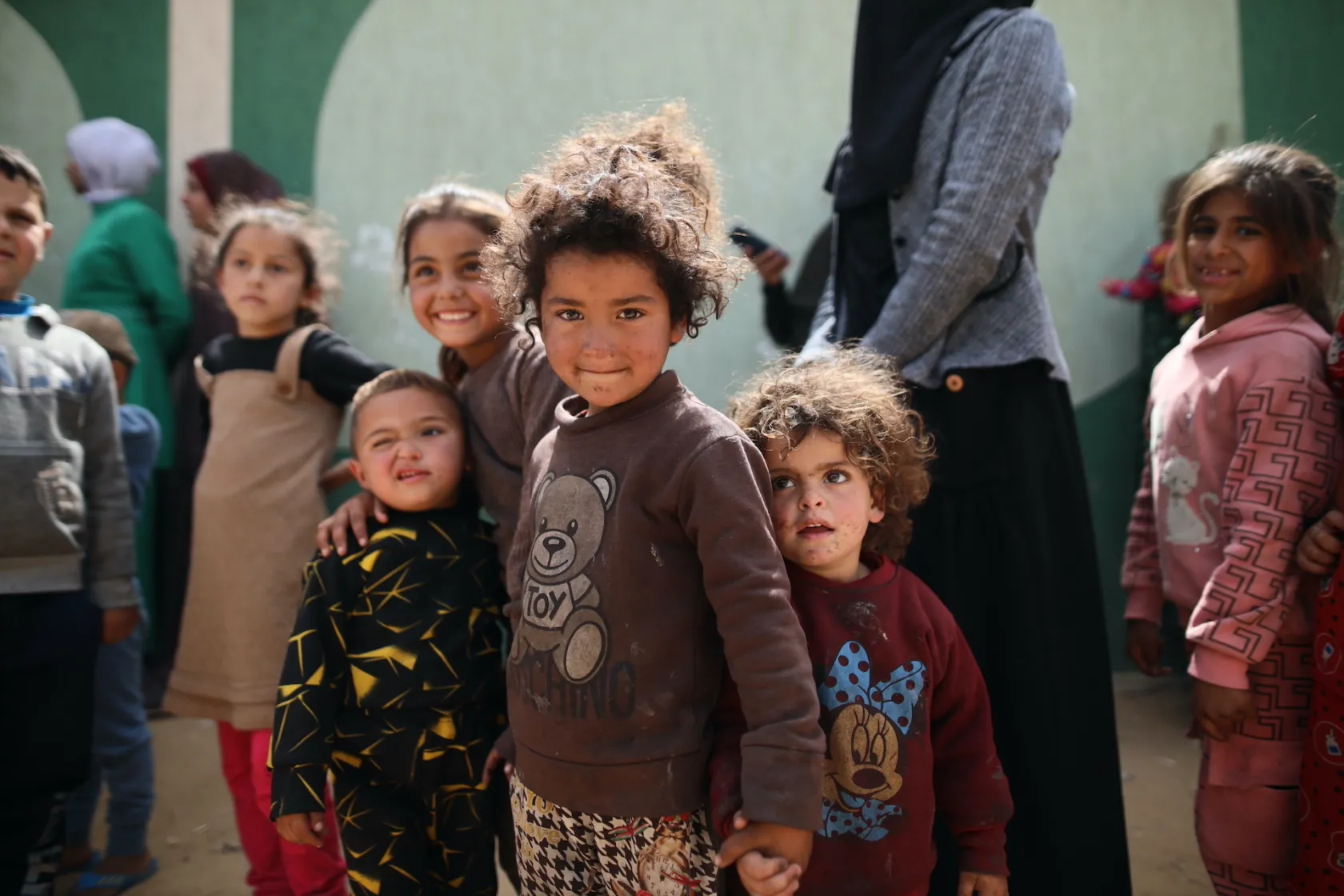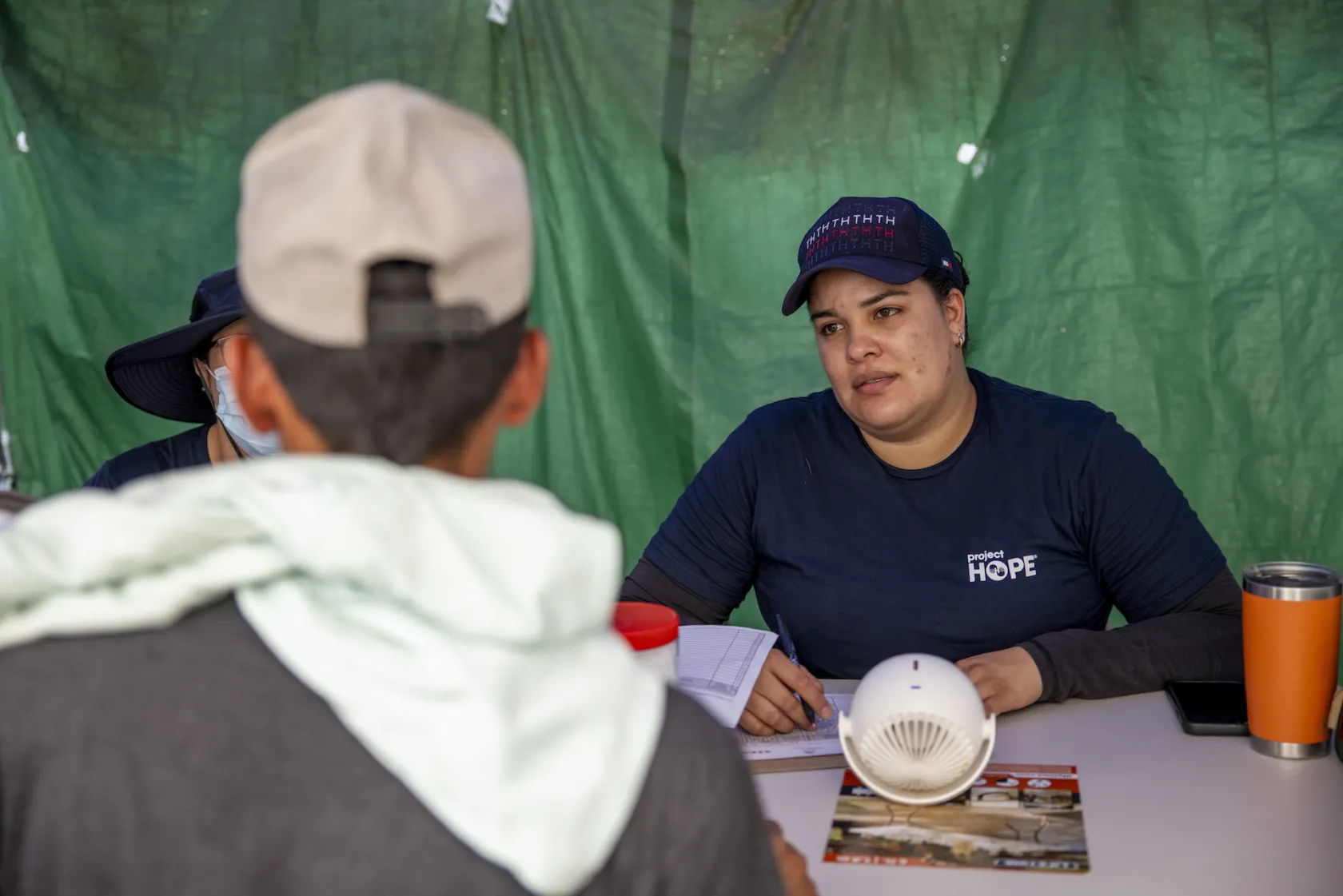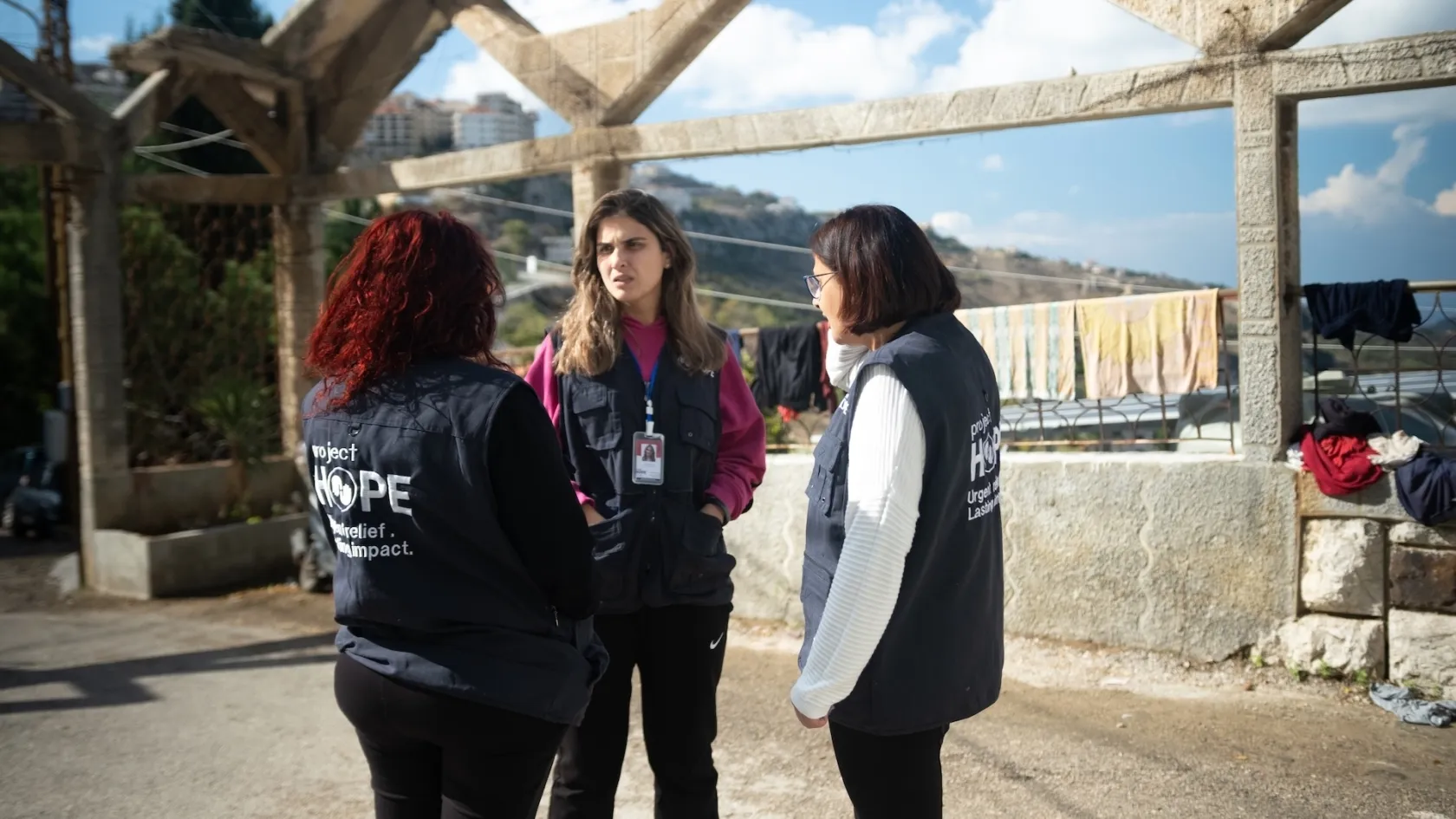8 Ways Displacement Harms Your Health
Learn more about the greatest health challenges facing refugees, internally displaced people, and forced migrants around the world.

The number of displaced people around the world has increased each of the last 12 years. Today, one in every 69 people is displaced — a global total of nearly 120 million people. On its own, the number of refugees, internally displaced people (IDPs), and forced migrants would be one of the 15 most populous countries on earth.
Being forced from home is one of the greatest threats to your health. In an instant, you can lose access to your doctors, medications, and documents, with no guarantee you’ll ever see them again.
Project HOPE is working to restore essential health care to refugees, IDPs, and migrants around the world. Here are some of the most urgent health challenges our teams are seeing each day.
Ecuador
Migrating is a daily challenge of survival. In Ecuador, we receive people with different health conditions. Uncontrolled chronic diseases are most common, but they are difficult to address because they require follow-up from the health system itself. For people with plans to stay in-country, our teams coordinate appointments with the public health system so that they can access health services. For those on the move, our greatest focus is on relieving their acute health conditions such as respiratory and gastrointestinal infections, pain, and dehydration with the aim that their journey is at least without discomfort.
It is essential to talk about the effects of migration on mental health. These health issues do not hurt physically per se, they do not bleed, and they are not visible, and for that reason they are difficult to recognize. Stress, anxiety, and uncertainty are common in our patient population. For this reason, our psychology teams provide therapy spaces that allow people to recognize and release their emotions. Additionally, they receive advice on different tools they can apply in contexts in which their mental stability may be compromised.
Dr. Denisse Calle
Team Lead, Túlcan, Ecuador

Colombia
In Colombia, the migrant population faces many challenges due to a lack of available resources. The first challenge is that many migrants are not connected with the formal health system due to their transitory status. Added to this is that many migrants in Colombia do not have knowledge of the local health system and often don’t have the economic resources or access to transportation to reach health facilities. In some areas, there are even mobility restrictions put in place by armed groups that can prevent access. Migrants here may also be deterred by past experiences with health professionals that felt dehumanizing.
For this reason, Project HOPE’s work in Norte de Santander is so pertinent. We work alongside the state and health institutions providing resources such as medical equipment, medical supplies, medications, and laboratory tests. We also support local health professionals so that they can provide high-quality and respectful care for the migrant population.
Monica Hoyos
Program Director, Colombia
Many migrants are not connected with the formal health system due to their transitory status. Added to this is that many migrants in Colombia do not have knowledge of the local health system and often don’t have the economic resources or access to transportation to reach health facilities.
Gaza
People in Gaza are really, really suffering. People are desperate and do not have anything. You can’t imagine what it’s like for more than 1 million people to be crammed in such a small area. People fight just to get water when a truck appears. It’s a catastrophe of a situation.
Most of the hospitals in Gaza are overwhelmed because of the casualties coming from the constant bombardments. Recently I visited with our emergency medical team at Al Aqsa Hospital to understand how the situation has been and what sort of support they have been giving to the patients.
The staff told me how they managed to attend to people who were injured in the recent bombing in Rafah. Most of the patients had severe injuries that needed emergency surgery. The surgeries were complicated. Shrapnel needed to be removed extremely gently as it was affecting liver and kidney function. The doctors had attended many people with severe burns covering 50 to 90 percent of their bodies. One doctor told me that with the last patient he saw, he had done his best, but unfortunately she passed on because she had severe burns on more than 90 percent of her body.
We have seen a rise in cases of acute diarrhea and are starting to see outbreaks of hepatitis A and B. We have also seen an increase in the number of people being discharged from health facilities who have nowhere to go, including children who have lost their parents and do not have anyone left. Women and children, especially, are suffering. Every one of their lives is in danger if something is not done.
Moses Kondowe
Team Lead, Gaza

Moldova
The greatest health challenges for refugees in Moldova revolve around accessing essential health care services. Notably, a significant percentage of Ukrainian refugees resort to crossing back into Ukraine for medical treatment due to obstacles in Moldova’s health care system, including high costs, lack of specialist doctors and services, and long waiting times.
Moreover, there’s a disparity in health care needs between refugees who intend to stay in Moldova and those planning to leave, with the former reporting higher demands for medicines, health services, and personal hygiene items. Despite efforts by the Moldovan government and humanitarian organizations like ours, structural weaknesses persist, hindering refugees’ access to necessary medical assistance and exacerbating their vulnerability.
Ana Maria Bubuioc
Health Officer, Moldova
Haiti
Most internally displaced people (IDPs) in Haiti are hosted by host families. However, in the Port-au-Prince Metropolitan Area, the majority of IDPs (61%) live in sites like schools, churches, government offices, and vacant lots. There are nearly 200 IDP sites across Haiti, and because the displaced families who live in them do not have the financial resources to get medical care in a health facility, they resort to self-medication. Communicable diseases, chronic diseases, injuries, and surgical cases requiring immediate intervention are common.
The INGOs and local NGOs working in the health and nutrition sectors do not have enough resources to provide a comprehensive health package to all the IDP sites. Additionally, referral mechanisms to health facilities for severe cases, gunshot wounds, and injuries are a serious problem in the metropolitan area where the health system is paralyzed, hospitals have been destroyed or closed, and the number of medical staff has been reduced. The few ambulances that are still operational are unable to circulate on certain routes because some areas are under the control of armed groups, and other roads are blocked.
In some health facilities that are still operational, stocks of medicines have run out. Given the insecurity, the supply of medicines and other medical consumables is becoming very complicated, as the supply circuit is no longer fully functional. At the community level, pharmacies are no longer able to obtain supplies because the supply circuit has been badly affected by the insecurity (including the closure of the borders with the Dominican Republic, which used to be a major source of supplies).
In Project HOPE’s area of intervention (Nippes, Sud and Grand’Anse departments), our team is providing free quality health care for IDPs through mobile medical mobile units, which continue to register new IDPs on a regular basis. The package of MMU services consists of general consultations, deworming, prescriptions, health education, hygiene promotion, mental health care, referrals, and more. As the needs are enormous and increasing, Project HOPE’s goal is to extend these mobile clinic activities to other communities.
Mozart Wildonja
Program Director, Haiti
Referral mechanisms to health facilities for severe cases, gunshot wounds, and injuries are a serious problem in the metropolitan area where the health system is paralyzed, hospitals have been destroyed or closed, and the number of medical staff has been reduced.
Honduras
Health is a right for everyone, regardless of whether you are passing through a country or not. In Honduras, one of the main challenges is awareness — making sure migrants know they have access to free health care. Another is transportation: actually getting migrant patients to locations where health units provide care. Even in those units, resources can be scarce, and there may not be complete treatments or laboratory tests available.
Mental health is also a serious issue. For those who have to be hospitalized, the anguish of not knowing where your family will stay increases, especially for those who have underage children, older adults, or pregnant women with them.
Dr. Viviana Santos
Team Lead, Danlí, Honduras

Poland
Ukrainian refugees in Poland face significant health challenges. About 20 percent experience physical health difficulties, with eyesight issues being most common. Disabilities affect 5 percent of all refugees and 18 percent of older individuals. Nearly a third suffer from chronic illnesses, and the same proportion needed health care in the last month, though one in 10 could not access it. Long waiting times for appointments are a major problem, with nearly half of refugees unable to secure an appointment.
Mental health is a critical concern, with one in five refugees experiencing psychological distress that hampers daily functioning. Over half of those in need of mental health support do not receive it, often due to stigma and lack of information on where to seek help. Women and older people, particularly those over 60, are more likely to report emotional distress and less likely to receive support, underscoring the need for better access to mental health services and efforts to combat stigma.
Dorota Kuchna
Operations Director, Project HOPE Polska
Ukraine
There are several challenges that IDPs in Ukraine have been facing since the start of the full-scale invasion. First, it’s a challenge to actually get to a health care facility due to long travel distances. For example, the number of cars in Ukraine covers only 15 percent of the population, compared to 80 percent in the U.S. With the health care infrastructure damaged across the country, there is limited access to medical services, diagnostics, and medicines.
Few people in Ukraine schedule annual checkups with their doctor, which means that patients who develop acute stages of diseases only see a doctor in case of emergency. There’s also a low level of awareness about how to access health care.
Another major problem for IDPs is financial constraints. Although basic and emergency medical care is free, a wider range of tests and services require money. Finally, mental health stigma remains a problem, especially for people over 40.
Mark Gizov
Health Coordinator, Ukraine



